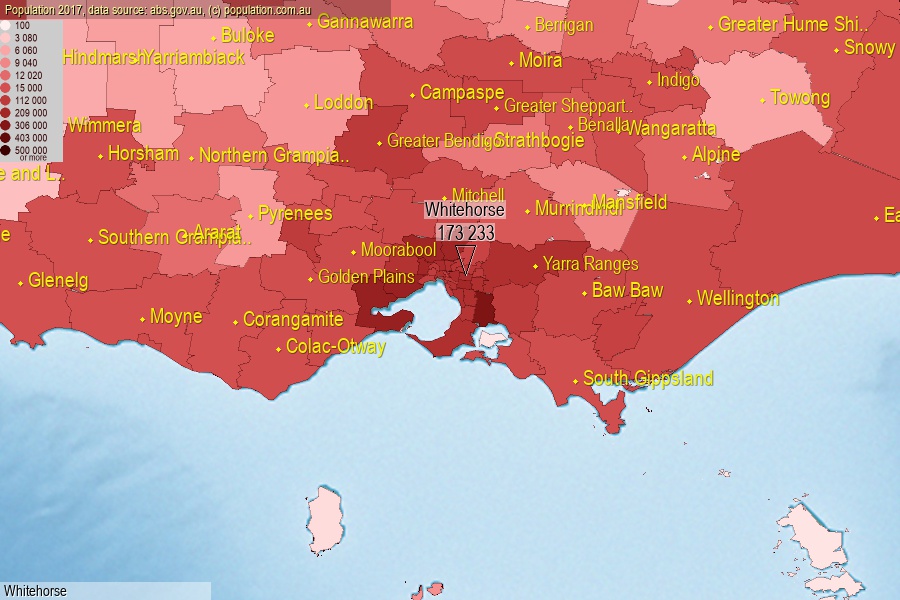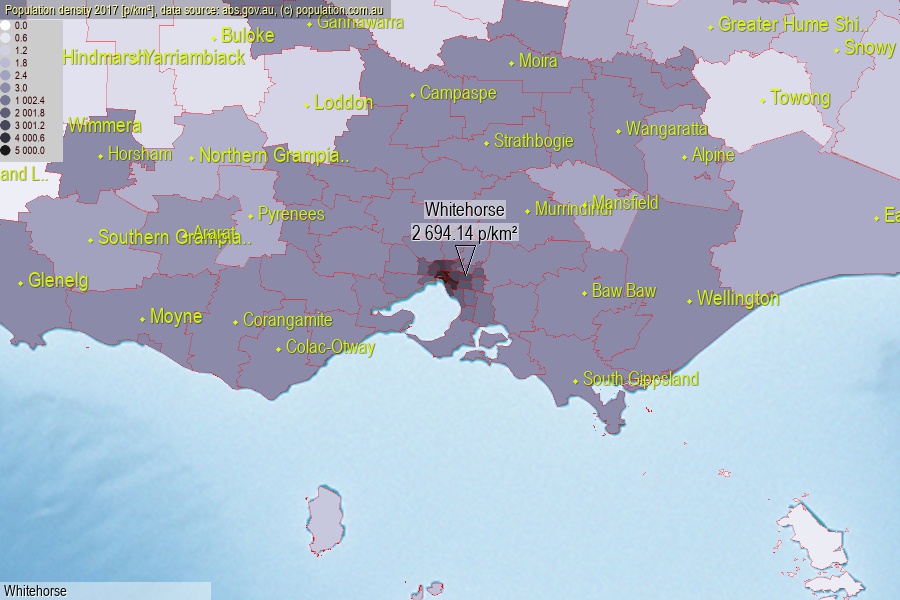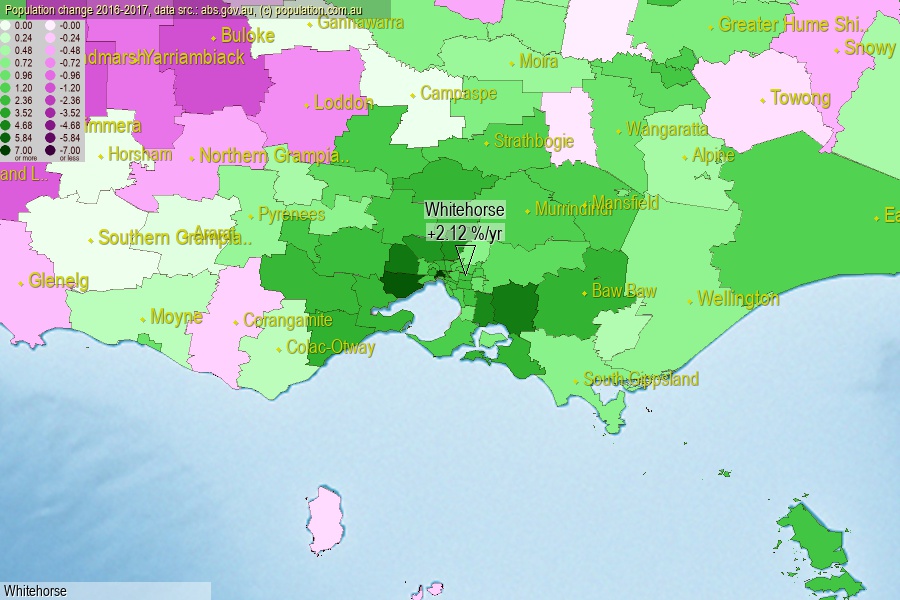 population.com.au
population.com.auLast official estimated population of Whitehorse City (as Local Government Area) was 173 233 people (on 2017-06-30)[2]. This was 0.70% of total Australian population and 2.694% of VIC population. Area of Whitehorse is 64.30 km², in this year population density was 2 694.14 p/km² . If population growth rate would be same as in period 2016-2017 (+2.12%/yr), Whitehorse population in 2025 would be 204 847. [0]



Click to enlarge. Whitehorse is located in the center of the images.
Population [people], population density [p./km²] and population change [%/year] [2]
[1996-2001] +0.44 %/Y
[2001-2002] -0.05 %/Y
[2002-2003] -0.05 %/Y
[2003-2004] +0.29 %/Y
[2004-2005] +0.61 %/Y
[2005-2006] +1.14 %/Y
[2006-2007] +1.45 %/Y
[2007-2008] +1.53 %/Y
[2008-2009] +1.61 %/Y
[2009-2010] +0.70 %/Y
[2010-2011] +0.31 %/Y
[2011-2012] +1.35 %/Y
[2012-2013] +1.52 %/Y
[2013-2014] +1.38 %/Y
[2014-2015] +1.44 %/Y
[2015-2016] +1.78 %/Y
[2016-2017] +2.12 %/Y
[0] Calculated with linear interpolation from officially estimated population
[1] Read more about LGA and Australian Statistical Geography Standard (ASGS) on abs.gov.au
[2] Population data from Australian Bureau of Statistics (Population and density: 2017; change: 2016-2017)
[3] Digital Boundaries: Australian Statistical Geography Standard (ASGS) 2016.